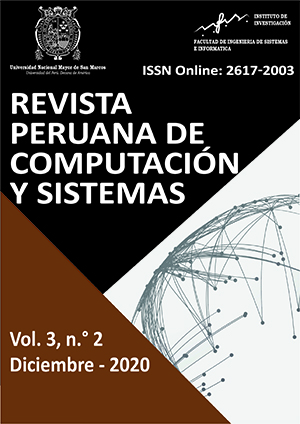Modeling and Simulation of Urban Transport Networks: Six Cases in Lima
DOI:
https://doi.org/10.15381/rpcs.v3i2.19391Keywords:
Model, transport network, simulation, traffic congestionAbstract
Studies of urban transport networks in many cities are not well focused, since they do not include tools for their planning and control, making decisions to solve the multiple problems regarding traffic congestion expensive and not adequate, generating discomfort in the users, and many times it aggravates the problems, since its impact is not evaluated. Currently exist a variety of simulators that are helpful for traffic simulation and online monitoring. An alternative to this are traffic simulators, which currently exist in variety, however, they are not easily accessible, a formal study and a relationship with the research center that provides it is required, their personalized reports are limited and they comply to another reality. In the present work, six frequent cases of urban transport networks in Lima are modeled, simulated and validated: intersection, oval, union, by-pass, clover and T; by using Arena (general-purpose simulator), known statistical and simulation techniques. The T model was validated with an average confidence level of 95%, in addition, personalized information could be obtained for decision making.
Downloads
Published
Issue
Section
License
Copyright (c) 2021 Jesús A. Córdova Serrano, Sheila P. Campos Briceño, Rosa Delgadillo, David Mauricio

This work is licensed under a Creative Commons Attribution-NonCommercial-ShareAlike 4.0 International License.
THE AUTHORS RETAIN THEIR RIGHTS:
(a) The authors retain their trademark and patent rights, and also over any process or procedure described in the article.
(b) The authors retain the right to share, copy, distribute, execute and publicly communicate the article published in the Revista Peruana de Computación y Sistemas (for example, place it in an institutional repository or publish it in a book), with acknowledgment of its initial publication in Revista Peruana de Computación y Sistemas.
(c) Authors retain the right to make a subsequent publication of their work, to use the article or any part of it (for example: a compilation of their work, lecture notes, thesis, or for a book), provided that they indicate the source. of publication (authors of the work, magazine, volume, number and date).







